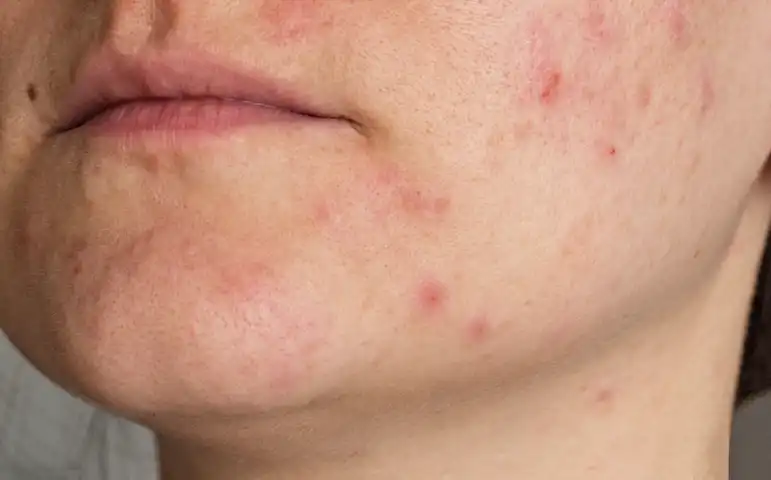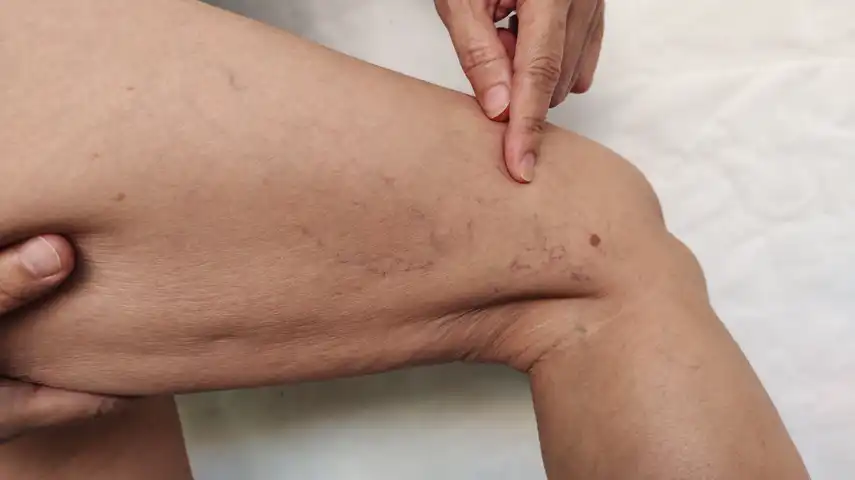Let’s be real—perimenopause can feel like puberty in reverse, and your skin often bears the brunt of it. One day you’re glowing, and the next, you’re wondering why your face feels like sandpaper or why you’re suddenly breaking out like a teenager. The truth is, perimenopause skin condition is a real thing, and it’s not just about wrinkles. From dryness to unexpected acne to changes in pigmentation, your skin is responding to the hormonal rollercoaster that happens during this phase of life. Let’s unpack exactly what’s going on—and what you can do about it.
What Is a Perimenopause Skin Condition, Exactly?
A perimenopause skin condition refers to any skin issue that develops or worsens during the years leading up to menopause, typically from your late 30s to early 50s. This is when estrogen and progesterone levels start to fluctuate—and not in a fun way.
These hormonal shifts don’t just mess with your mood and sleep—they impact your skin’s hydration, elasticity, oil production, and ability to repair itself. So if you’re suddenly noticing skin problems you never had before (or ones you thought were long gone), you’re not imagining it. These changes may include everything from breakouts to wrinkles to noticeable skin dryness. But don’t panic—this is all completely normal.
And just like with other perimenopausal symptoms—like joint pain or changes in body composition—your skin is simply reacting to your body’s internal chemistry shifts. This guide will break down these common skin conditions and offer some practical solutions for keeping your skin healthy during this time of transition.

All the Skin Conditions You Might Experience During Perimenopause (And Why)
Here are the most common skin conditions that can happen during perimenopause, and the science behind why they occur:
Dry, Flaky Skin
As estrogen decreases during perimenopause, your skin can lose its ability to retain moisture. This results in drier skin, which often feels tight, rough, and even flaky. Your skin may appear dull, and regular moisturizers may no longer seem to do the trick. To combat this, opt for rich, creamy moisturizers and hydrating serums that contain hyaluronic acid or ceramides. Also, don’t forget to drink plenty of water, as hydration starts from the inside out.
Tip: Try a thicker moisturizer at night, and avoid using harsh cleansers that strip your skin of its natural oils.
Increased Sensitivity and Redness
Your skin may become more sensitive during perimenopause due to thinner skin and a weakened skin barrier. This leads to conditions like redness, irritation, or an increased reaction to products that you may have used for years. If you’re noticing more reactions to skincare products (even those you’ve used in the past), switch to gentler formulas that are free of alcohol, fragrance, and other irritating ingredients.
Tip: Switch to a calming, fragrance-free moisturizer, and avoid exfoliating too much, which can aggravate sensitive skin.
Breakouts and Hormonal Acne
Hormonal fluctuations during perimenopause can lead to an increase in androgen hormones (male hormones), which can stimulate sebaceous glands and lead to acne breakouts, particularly around the chin and jawline. If you thought acne was just for teens, think again! This condition, often called ‘adult acne,’ is a very real and frustrating symptom of perimenopause.
Tip: Use products with salicylic acid, benzoyl peroxide, or retinoids to help clear breakouts. You may want to consult a dermatologist for hormonal treatments like birth control or spironolactone to help regulate hormone levels.
Sagging Skin and Fine Lines
A decrease in collagen production (the protein that gives skin its structure and elasticity) is one of the major skin changes you’ll experience in perimenopause. With less collagen, your skin becomes looser and more prone to sagging, especially around the cheeks, jawline, and under the eyes. Fine lines become more noticeable, and skin may appear less firm overall.
Tip: To help reduce sagging, incorporate retinol or peptides into your skincare routine, as these ingredients stimulate collagen production. Also, make sure you’re eating a collagen-boosting diet rich in vitamin C, zinc, and antioxidants.
Hyperpigmentation and Age Spots
As estrogen fluctuates during perimenopause, the skin may produce excess melanin in response to the hormonal changes. This often results in dark spots, sunspots, or a condition known as melasma. These pigmented areas can be especially noticeable on the face, and they can make you feel self-conscious, especially if they appear in patches.
Tip: Apply a broad-spectrum sunscreen every day to prevent further pigmentation. Topical treatments like vitamin C or retinoids can help fade dark spots over time.
Dull, Lackluster Skin
Perimenopause can slow down the skin’s cell turnover rate, meaning it may take longer for your skin to shed old, dead skin cells. The result? A complexion that looks lackluster or tired. In addition to dullness, your skin may feel rough to the touch.
Tip: Use gentle exfoliating treatments like glycolic acid or lactic acid a couple of times a week to promote cell turnover. This can help brighten your complexion and improve skin texture.
Thinner Skin and Slower Healing
As estrogen levels drop, your skin becomes thinner, which makes it more prone to bruising, tearing, and longer healing times. Small cuts or nicks might take longer to heal, and your skin might feel more fragile overall.
Tip: Use products that help strengthen the skin barrier, like those containing peptides and ceramides. Additionally, ensure you’re getting enough vitamin K in your diet, as it plays a crucial role in skin healing.
Spider Veins and Redness
Some women may notice small, visible veins appearing on their legs or face during perimenopause. This condition is often due to thinning skin and a decrease in collagen. The blood vessels become more prominent, resulting in spider veins or redness around the cheeks and nose.
Tip: Laser treatments can help reduce the appearance of spider veins. If you prefer to go the natural route, elevating your legs at night and wearing compression stockings may provide relief.
Increased Risk of Skin Cancer
As you age, your risk for skin cancer naturally increases, and perimenopause is a time when you might notice more changes in your skin. Thinning skin makes it more vulnerable to damage from the sun, which can lead to increased risks of skin cancer, including basal cell carcinoma and melanoma.
Tip: Protect your skin by applying sunscreen daily, wearing hats, and avoiding excessive sun exposure. If you notice any changes in moles or skin growths, be sure to consult a dermatologist for a skin check.

The Science & Research Behind Perimenopause Skin Conditions
Hormones & Skin Health: The Estrogen Effect
Estrogen helps your skin maintain its elasticity, hydration, and thickness. As estrogen levels decrease during perimenopause, your skin becomes thinner, drier, and less able to produce collagen and elastin—two proteins that give your skin structure and strength. According to research published in the International Journal of Women’s Dermatology, women may lose up to 30% of their collagen within the first five years of menopause. This is a significant contributor to the sagging and fine lines many women experience. Source
Inflammaging: A Sneaky Culprit
As we age, our bodies experience a phenomenon called ‘inflammaging,’ which is a low-grade, chronic inflammation that speeds up skin aging. Hormonal changes during perimenopause worsen this process, making skin more prone to sensitivity, redness, and accelerated aging.
Skin Barrier Changes
As estrogen drops, your skin’s natural moisture barrier becomes less effective, leading to increased water loss. This results in dryness, redness, and irritation. Studies suggest that strengthening the skin barrier with ingredients like ceramides and hyaluronic acid can help prevent some of these effects.

Frequently Asked Questions About Perimenopause Skin Conditions
Why is my skin suddenly dry and itchy during perimenopause?
Hormonal shifts—especially dropping estrogen levels—affect your skin’s ability to retain moisture. Your skin produces less natural oil, and your barrier function weakens, making it easier for moisture to escape. The result? Dry, flaky, sometimes itchy skin that feels tight no matter how much you moisturize.
Why am I breaking out during perimenopause?
Hormonal fluctuations during perimenopause can cause an increase in androgens, which can stimulate the sebaceous glands and cause acne. This is often concentrated around the chin, jawline, and neck. The increase in sebum production leads to clogged pores, which can trigger breakouts.
Can perimenopause cause wrinkles?
Yes! As estrogen decreases, collagen production slows down, and skin loses its elasticity. This leads to fine lines and wrinkles, especially around the eyes and mouth. It’s a common and natural part of aging, but proper skincare can help minimize the appearance of wrinkles.
Can I still wear sunscreen during perimenopause?
Absolutely! Sunscreen is essential at every age, but especially during perimenopause. Hormonal changes can lead to increased pigmentation and a higher risk of skin cancer, so applying broad-spectrum sunscreen daily is more important than ever.
What can I do to maintain my skin during perimenopause?
Focus on moisturizing regularly, using products with ingredients like hyaluronic acid and ceramides, and incorporating antioxidants into your skincare routine. Additionally, avoid harsh products that can irritate your skin, and protect your skin from the sun to prevent further damage.







